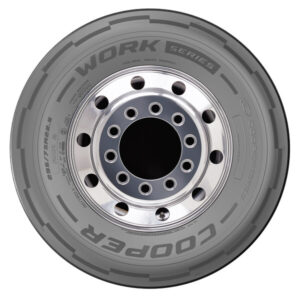COLUMBUS, IN – The Mexican economy is growing, post-pandemic nearshoring is exploding and freight activity is increasing across the border, but what does this mean for the Mexican trailer market?
According to ACT Research’s new Mexican Trailer Market report, commercial trailer registrations in Mexico have increased 21% ytd through June 2024, though the number of trailer manufacturers with business in Mexico has declined.
“Unlike other ACT Research reports, the information in this report does not come from confidential data provided directly from OEMs,” said Jennifer McNealy, Director, CV Research Analysis & Publications at ACT Research about the report. “It represents registration data, which gave us the opportunity to not only dissect by manufacturer, but also to share industry and segment data by trailer maker. And while this does not represent manufacturer build, in lieu of any other market-sizing data, it does provide an excellent proxy.”
According to Bailey Schnur research and publications manager at ACT Research, in 2016, there were 293 trailer manufacturers registering units in Mexico. Since then, the number of companies has oscillated around that near midpoint. In 2023, a record-high 335 manufacturers were adding trailers to the fleet. Through the first half of 2024, that number declined to 297.
“It will be interesting to see if any additional OEMs enter the market during the second half of the year,” Schnur said. “While the number of OEMs has declined slightly, trailer registrations in Mexico have increased since 2016. In that year, there were 21,070 commercial trailers registered in Mexico, with that number increasing to 32,620 new trailers registered in 2023, and 18,358 units registered in 1H’24. Compared to June 2023 when 15,224 trailers were registered, industry capacity is up 21% with half the year remaining. Of the new trailers through June 2024, 73% of them were registered by the top 25 manufacturers in Mexico. Four of those top manufacturers are US-based and hold 14% of the total trailer market below-the-border registrations.”
According to David Teolis, ACT Research Chief Economist, nearshoring presents a significant opportunity to enhance the economic importance of both Mexico and the United States, acting as a catalyst for increased manufacturing investment, infrastructure development, and supply chain resilience. Though the path to realizing these strategic advantages involves navigating certain risks and challenges, nearshoring is poised to drive regional economic competitiveness, growth, and stability over the long term.
“Reflecting strong US growth and deepening economic ties with Mexico, truck crossings at the Mexican border rose 4.4% y/y in September and are up 3.3% year to date through the third quarter,” said Carter Vieth, Research Analyst at ACT Research. “Truck crossings from Mexico have grown considerably since the pandemic. Risks to nearshoring, and by default cross-border activity, remain, particularly political risks in the US and Mexico.”







